I noticed that the volume of a speaker gets slightly lower when combining the left and right channels versus having ONLY one of the 2 channels connected to the speaker. I know that combining the left and right audio channels by simply soldering the 2 wires together is not a good idea and might damage the device outputting the audio, but thats not the point of the question. So what is causing this effect? A guess would be that there is some short circuiting going on between the 2 channels on the device thats outputting the audio because of slightly different impendances
-
3Please draw a diagram what you are connecting and how. It also depends on what you play back, identical signals on both channels or something else. Also what is the purpose of trying it if you know it is a bad idea and likely damages the amplifier - depending on amplifier it can already be damaged. – Justme Jul 14 '23 at 19:21
-
Its just an old laptop with the right and left audio channels combined and then fed to a speaker. I am just doing some experiments and i don't care about damaging the laptop or the speaker. – Stelios Liakopoulos Jul 15 '23 at 11:06
-
Audio channels combined *how?* – user207421 Jul 16 '23 at 04:16
-
@user207421 took the 2 wires of the left and right channel and soldered them together. – Stelios Liakopoulos Jul 16 '23 at 14:08
4 Answers
Without any further details, the possible reasons why volume gets lower when two channels are combined:
- "Combiner" is damaged / unsuitable.
- Audio output amplifiers are damaged / fighting each other.
- One audio output is out-of-phase (reversed polarity.)
- Audio has been processed (delay, filter, expander, etc.) so many frequencies cancel each other out.
- 15,913
- 4
- 30
- 67
-
Well there is no combiner device. Its just the left and right channels soldered to a single wire – Stelios Liakopoulos Jul 15 '23 at 11:00
-
If one of the outputs is out-of-phase, you should be able to tell. The sound won't just be slightly more quiet, it will also sound weird depending on the song. Often the vocals will be weird or inaudible. – Glenn Willen Jul 16 '23 at 06:43
Contrary to popular belief, the output impedance of an amplifier is not 8 or 15 Ohms. It is very low, typically less than 0.5 Ohms So connecting outputs in parallel presents close to a short circuit load to each. The level will drop and you have a strong chance of damaging the amplifier.
- 539
- 2
- 7
-
+1 for "strong chance" as too many people present this kind of thing as a certainty. The amplifier *could* be damaged; it also could not. – user253751 Jul 15 '23 at 17:42
The left and right audio channels will have the same output characteristics. When the two are combuned by wiring the two out puts together, voltage dividers are formed with the output resistances. Superposition can be used to calculate effect on the output.
In all figures below \$R_{load}>>R_{out}\$
Figure 1 shows the normal stereo set up.
Figure 2 shows the channels shorted together.
Figure 3 shows that the Rout of the left channel forms a voltage divider with the Rout of the right channel. Since the Routs are equal, the voltage contribution of the left channel to the superposed output is reduced by 1/2.
Figure 4 shows the same effect for the right channel.
I noticed that the volume of a speaker gets slightly lower when combining the left and right channels versus having ONLY one of the 2 channels connected to the speaker.
Correct, The voltage is reduced by 1/2 or 6dB, implying that the powe is reduced to 1/4.
If the preamplifiers are robust enough, this connection may be feasable.
If you are shorting the two channels at the speakers, then damage can occur. The output impedances are so low that excessive current will probably take out the power transistors. Don't do it.

simulate this circuit – Schematic created using CircuitLab
- 12,496
- 2
- 9
- 34
Connecting the two channels together can cause some reduction in signal, but it depends on the output signals of the amplifiers.
Take this case where there are two amplifier channels (represented here by voltage sources, but you could also use current sources) each with 100 m\$\Omega\$ impedance going into an 8 \$\Omega\$ speaker. In the output graph the voltage of one source has been stepped from 0 to 0.707 to 1.414 Vpk while the second source is fixed at 1.414 Vpk
When the voltages are equal, you get near full volume, when one channel has no output it acts as a load, reducing the output by 6 dB (basically a voltage divider with two 100 m\$\Omega\$ resistors), when one channel has half the signal of the other the output will be halfway between those points.
The difference in signals can be due to level, frequency or phase. Anytime the output of the two amplifiers is not exactly the same voltage there will be some reduction.
With a stereo signal the the two outputs will be roughly the same for anything in stereo center, for things that are left or right of center the outputs will be different, so the more of a mono mix you're listening to the louder it will be, the more stereo separation the quieter it will be. You won't get full volume or half volume, you'll get something in between, this is probably why you say it's slightly lower..
And as others have stated, it's probably not very good for your amplifier.
- 17,628
- 1
- 16
- 45
